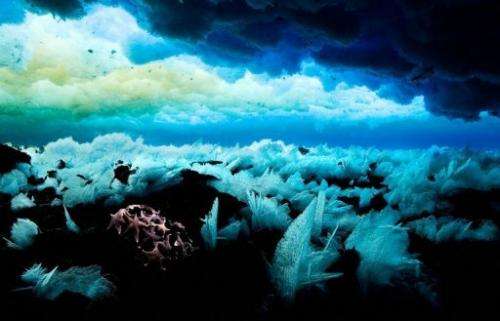Bone-munching worms found on sea floor

Scientists said Wednesday they had discovered two new species of a strange bone-devouring worm thriving in the mysterious waters that surround the Antarctic continent.
The Osedax worms feed on the bones of dead whales that settle on the sea floor, fulfilling an important recycling role, said a study published in the journal Proceedings of the Royal Society B.
The worms, named Osedax antarcticus and Osedax deceptionensis, were discovered by an international team of scientists probing the fate of whale bones and shipwrecks on the Southern Ocean floor.
The worms are a few millimetres long, each with four finger-like appendages attached to a central trunk.
Five other Osedax species had been known before the two Antarctic types were found.
While the team revelled in their discovery, they were struck by a distinct absence of wood-eating molluscs known as Xylophagainae commonly found on deep-sea sunken wood.
"Over the course of a year, we deployed and recovered a piece of underwater equipment called a deep-sea lander, laden with the most unusual cargo—large whale bones and planks of wood," said study co-author Adrian Glover of London's Natural History Museum.
"When we recovered the bones and wood we'd put on the sea floor, the results were obvious immediately: the bones were infested by a carpet of red-plumed Osedax worms... but the wood planks were untouched, with not a trace of the wood-eating worms.
"The wood was hardly degraded... after 14 months on the sea floor"—one of the least explored ecosystems on Earth.
The apparent absence of wood-munchers may be good news for marine archaeologists.
The Southern Ocean is home to many a shipwreck—including British explorer Ernest Shackleton's pine and oak-built vessel Endurance, which was crushed by ice and sank in the cold waters on a 1914 expedition.
More information: Bone-eating worms from the Antarctic: the contrasting fate of whale and wood remains on the Southern Ocean seafloor , rspb.royalsocietypublishing.or … .1098/rspb.2013.1390
Journal information: Proceedings of the Royal Society B
© 2013 AFP





















